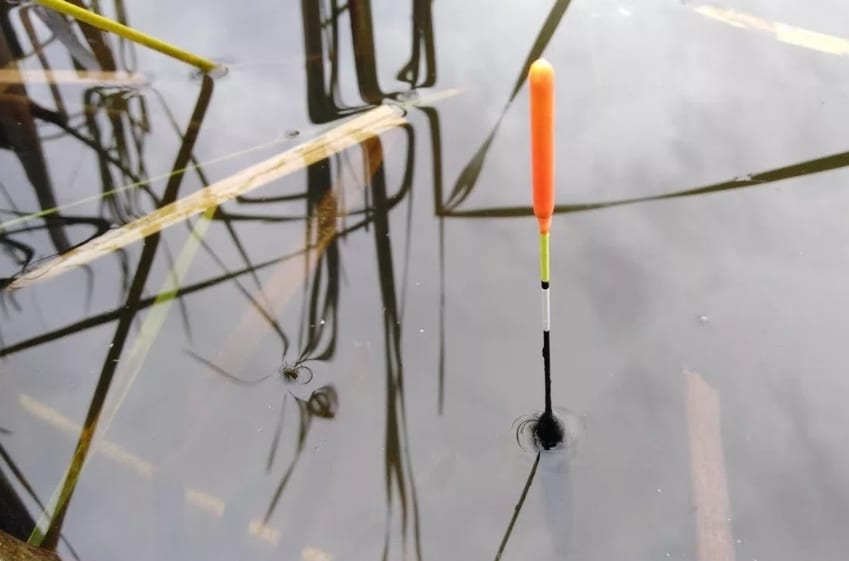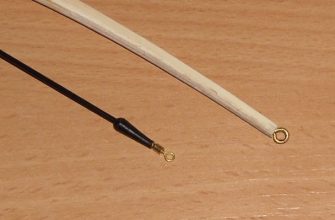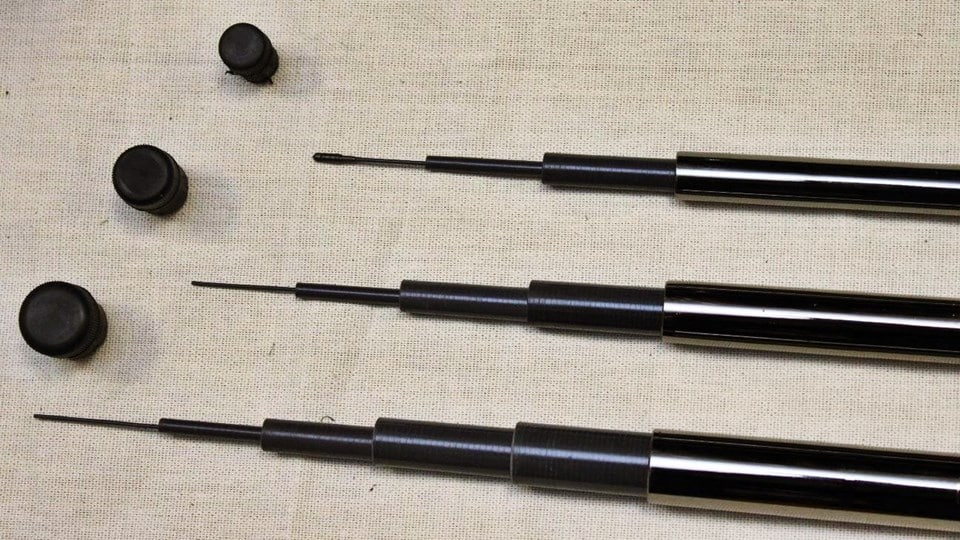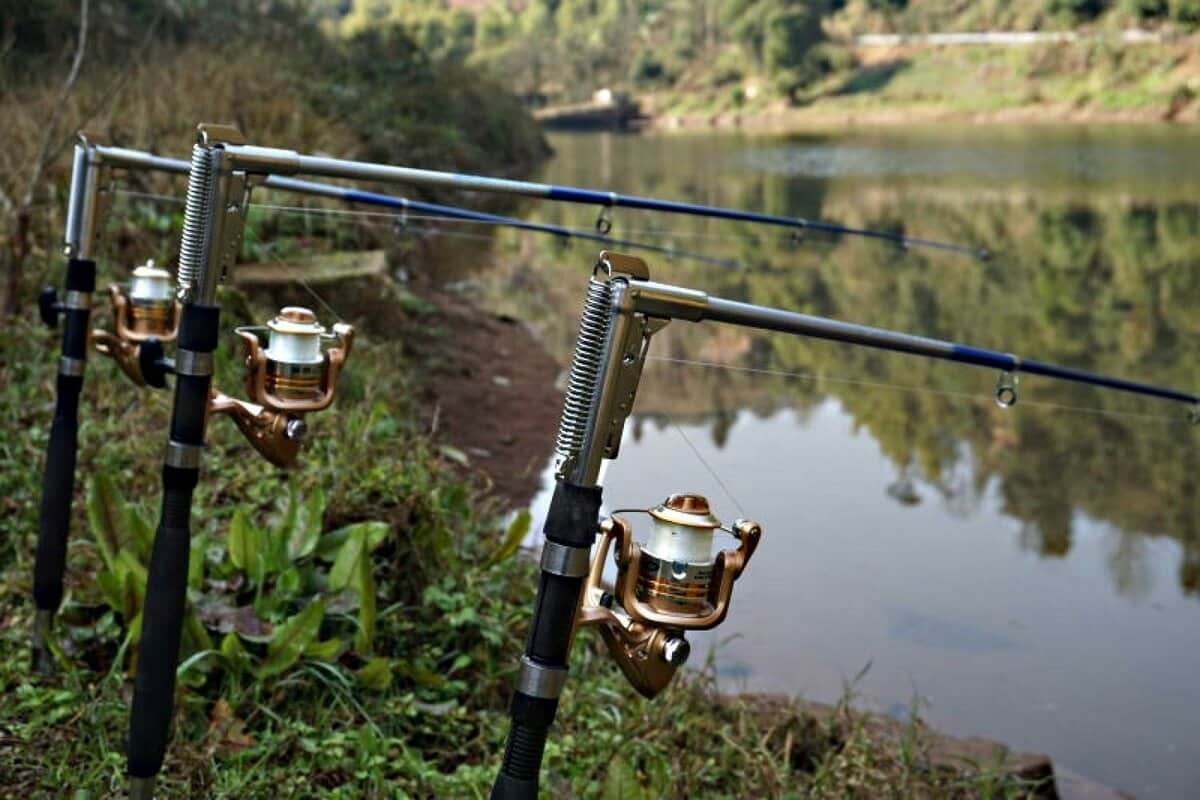Float fishing always remains relevant for many anglers in our country. Both beginners and experienced anglers are subject to the float. They fish on a float in most regions for almost 8-9 months a year, and the catch is quite competitive with the catch on a
feeder ,
donkey and other advanced more advanced tackle. About the details of float fishing in the fall, about the peculiarities of catching crucian carp, perch, roach, rudd and other fish on the float further in the article.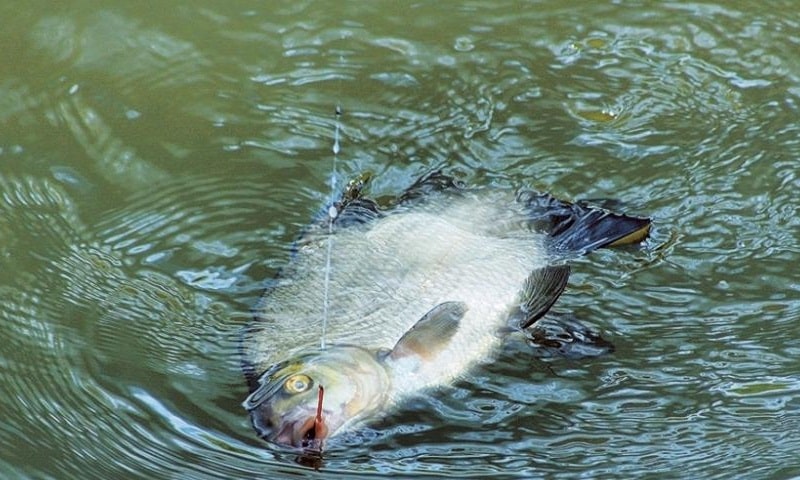
- Features of float fishing in the fall
- Where to catch an autumn float
- Fishing for crucian carp in the fall with a float rod
- About fishing for autumn bream – with a float
- Perch on the float in the fall – what to serve striped
- Autumn roach for float tackle
- Fishing for rudd – what a freshwater beauty loves in autumn
- Autumn carp fishing for a float rod – collecting tackle and go fishing
- Pike on the float ?! Yes it is possible
- How to assemble a float tackle?
- Different types of float fishing in autumn
- Drop wiring
- Tool drawing
- Snap anchoring
- Difficulties of fishing on a float in the fall and their solution
- Поделиться ссылкой:
Features of float fishing in the fall
Autumn is a
great time for fishing… Of course, spinning is the main tackle when the water is cold, due to the fact that it is the predator that is active at this time. But other tackles should also be given to autumn fishermen. About spinning fishing in the fall in our material: https://tytkleva.net/lovlya-xishhnoj-ryby/spinning/strategiya-i-taktika/osenyu.htm in the hands of the float tackle. In most cases, it shows itself well when fishing for leucorrhoea, as well as some predators, but this will be discussed a little later. The main features of fishing with a float in the fall are a different approach to the choice of the place of fishing, as well as a change in the installation of the rig. Due to the changed mood of the fish, it is necessary to create a less noisy / noticeable and more attractive tackle for it, which will not cause the slightest suspicion in it.In particular, you need to re-equip the fishing rod, replacing all bulky parts in it and designing it for catching a certain type of fish. Also, in autumn, as never before, the weather conditions affect fishing. It is necessary to pay as much attention as possible to temperature and atmospheric pressure, as well as monitor precipitation.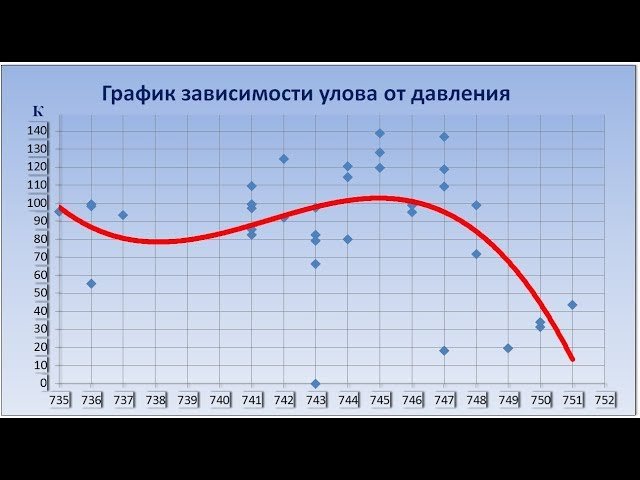
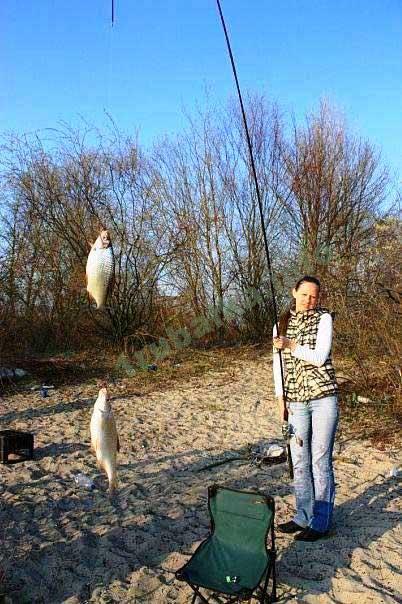
September to mid-
October . Further, there is a decline in activity in many representatives of the reservoir until spring, but fishing still takes place on cold autumn days in open water.
Where to catch an autumn float
As mentioned earlier, in autumn float fishing, it is important to choose the right place to fish. First of all, it is worth considering such features of the place as warmth, the presence of vegetation and food supply, as well as depth. The most attractive areas for fishing, in which many representatives of peaceful fish may well concentrate, are windows in yellowing reeds, provided that the depth of this place is not less than 0.8 meters and not more than 2-3 meters, because for deeper areas and their fishing should prefer feeder and bottom fishing. But this is not entirely true in the case of catching a predator on a float with live bait, but this will be discussed a little later.
in November , many fishermen have to deal with the passivity of fish. But this does not apply to all species. Let’s take a closer look at the behavior and features of catching the main freshwater fish in the autumn with a float rod.
Fishing for crucian carp in the fall with a float rod
Perhaps the crucian carp is the most widespread and frequently encountered representative of the majority of water bodies in our country. Crucian carp is caught successfully at any time of the year, but still its greatest activity, and with it the productivity of fishing, falls precisely
during the springand the beginning of autumn. For fishing for crucian carp, it is recommended to choose areas of a reservoir with abundant vegetation: reeds, cattail, willow – all this attracts crucian carp and is its reliable shelter. Float fishing for crucian carp in the fall for semolina, pearl barley – video from the shore of the reservoir: https://youtu.be/_dGvLGruzBo You should also pay attention to the water temperature: the crucian carp loves warmth, therefore, first of all, you should pay attention to well-heated areas with a depth of no more than 1, 5-2.5 meters. In autumn, crucian carp is caught during daylight hours. The greatest peak of its activity occurs at 9-12 am and at 16:00 and before sunset. He loves clear and calm weather, although there are often cases of his appetite manifestation during a little rain. Best of all, he bites on a standard rig in the form of a float weighing 3-5 grams, sinkers and hooks 7-12 numbers.It will be useful to any lover of float fishing: https://tytkleva.net/lovlya-mirnoj-ryby/poplavochnaya-snast/kak-pravilno-ogruzit-poplavok.htm When choosing the main line, it is best to focus on
fluorocarbon line with a diameter of 0.18 to 0.25 mm and a leader of 0.1-0.12 mm.
About fishing for autumn bream – with a float
Fishing for bream with a float rod in the autumn is a separate topic. Bream differs in many ways from many peaceful fish at this time. This fish is in no hurry to move to the bottom, to the maximum depth. On the contrary, this fish prefers colder water temperatures, therefore it stays in the middle layers of water or goes aground in a flock. It is recommended to fish for bream in areas with a sandy or clay bottom, where there is no particularly strong current and at the same time there is a fairly rich forage base.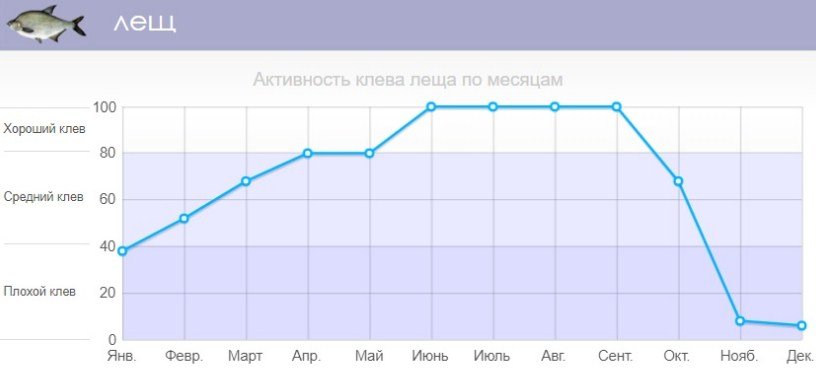

Perch on the float in the fall – what to serve striped
Fishing for perch in September is a pretty catchy business and not only with
spinning lures . At the beginning of autumn, the striped, like many any predators, wakes up an incredible appetite. The perch scour the coastal areas of the reservoir to find food in the form of fry and some insects. There are several ways to catch perch on a float tackle in the fall: on live bait using a long rod and a
spinning reel , or by anchoring the bait, but there may well be methods with its dragging along the bottom. In the latter case, you can use a worm and pieces of shell.
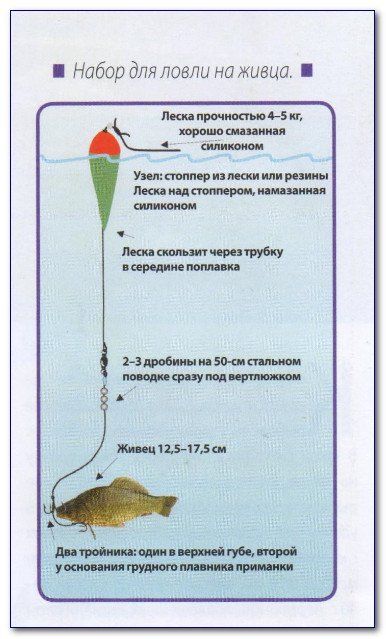
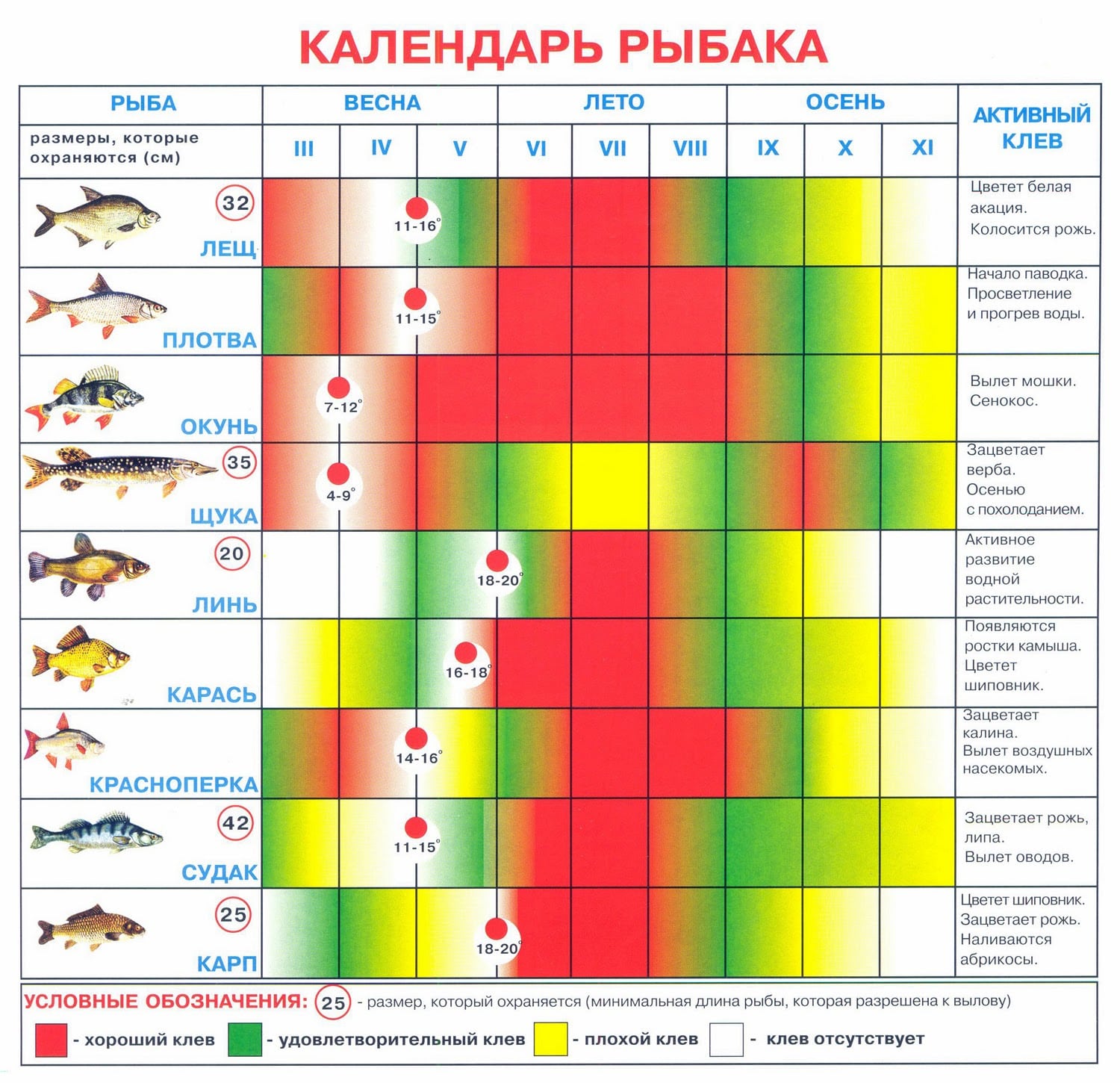
Autumn roach for float tackle
Roach, like other leucorrhoea, does not rush to the bottom in the autumn. This fish continues to feed near the shore even in cold water, if there is at least some food available. Roach most often swims in flocks, or moves with other representatives of white fish. This fish can bite both on clear sunny days and cloudy cool ones. Just when you catch it, you need to carefully select the bait, as well as correctly mount the tackle. To catch this fish you need a rod of 4-7 meters, equipped with a simple inertial reel and a thin line, which has a diameter of 0.12 to 0.20 mm and is unlikely to scare the roach. The color matches the color of the water. The float should also be as small as 3 grams.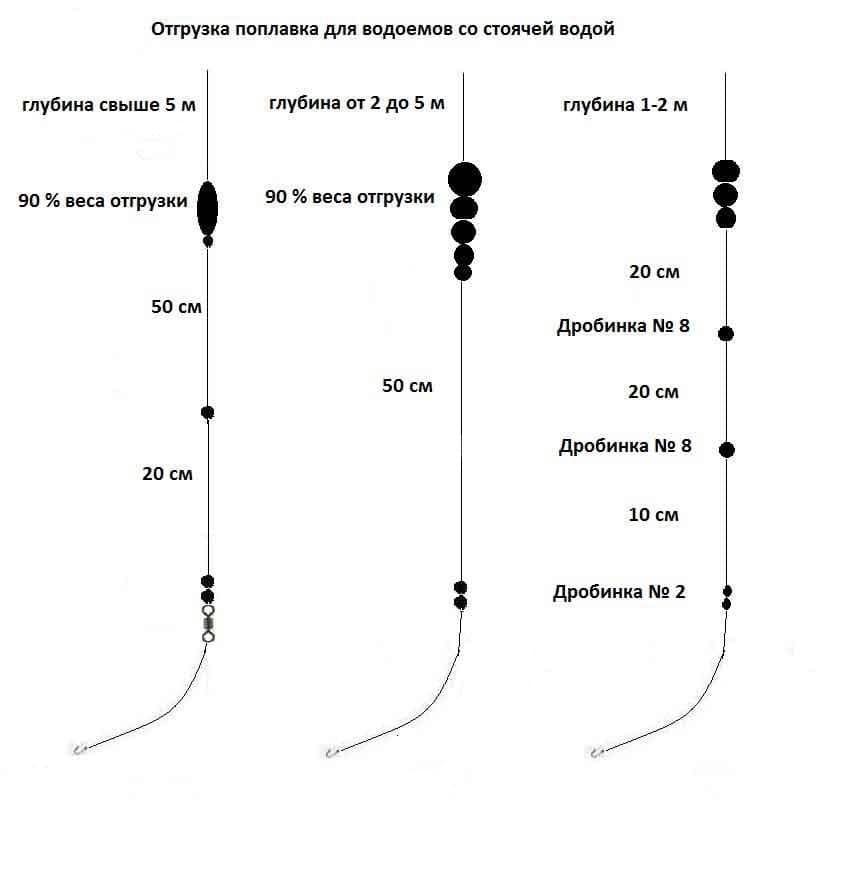

Fishing for rudd – what a freshwater beauty loves in autumn
Fishing for rudd in autumn is similar in many ways to fishing for roach. These fish do well in the same conditions for each other, and also feed in the same places, often being side by side. To catch rudd, you should also mount a non-bulky and delicate inconspicuous tackle. The only addition is the replacement of the hook. Rudds over 250 grams are rarely found on an angler’s hook, so smaller hooks should be used. 4-6 numbers show themselves well. It should also be said that the rudd loves clear weather more, and can also be found at shallower depths. In autumn, a sandbank near reeds or a gap with a sandy bottom, the length of which does not exceed 1 meter, will be an ideal place for fishing on rudd.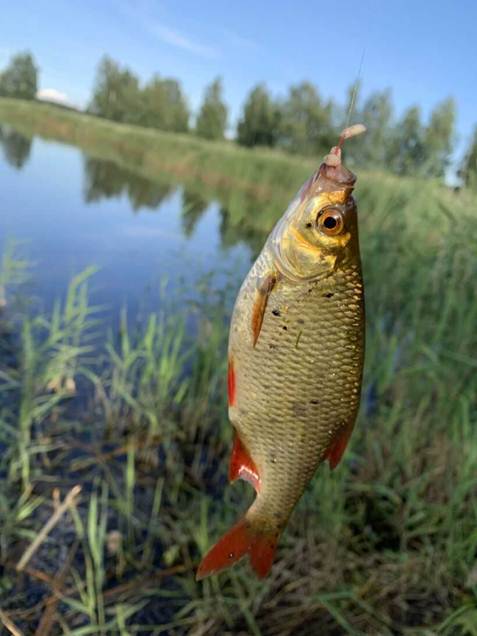
Autumn carp fishing for a float rod – collecting tackle and go fishing
Catching carp in autumn is burdened by a number of factors. Carp is a heat-loving fish that sinks to the bottom with decreasing temperature. Only occasionally, in the warmest time of the day, carp can go to feed to the shallows. It is best to catch carp in the first half of autumn, from September to the end of October. You should choose deeper coastal areas of the reservoir, preferably located near cattails or reeds. The ideal place for fishing carp with a float should be at least 1 meter and not more than 2.5 meters deep, as well as with a sufficient amount of feeding there. The tackle will also differ from the previously presented ones. For carp fishing you need a long
Bolognese or
match rod with a length of 7 to 10 meters.
boilies .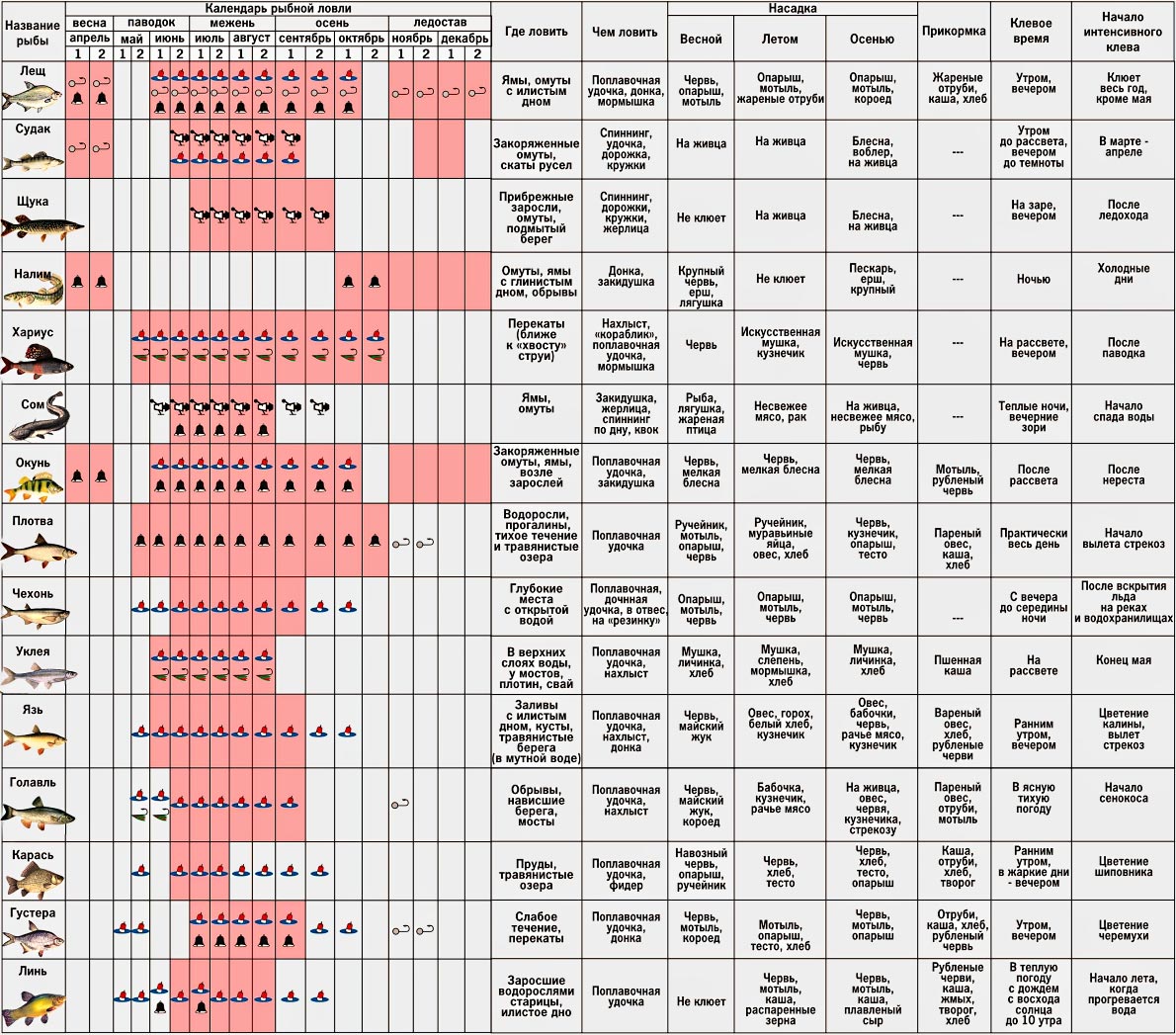
Pike on the float ?! Yes it is possible
The strategy for catching pike in the fall is similar to the strategy for catching perch, but despite this it has a couple of significant differences. First of all, it is worth mentioning that the pike is a large predator, so it is almost impossible to catch it on a hook with a worm. In the fall, this fish is looking for large prey in order to gorge itself as quickly as possible, so the main emphasis when catching it should be on live bait. To fish for pike, you need to look for deep coastal spots. The upper edges of the dumps, located not far from the reed or reed walls, show themselves well. Pike bite best during daylight hours. The peak of its activity is at 9 am, and in the evening at 5 pm and until sunset.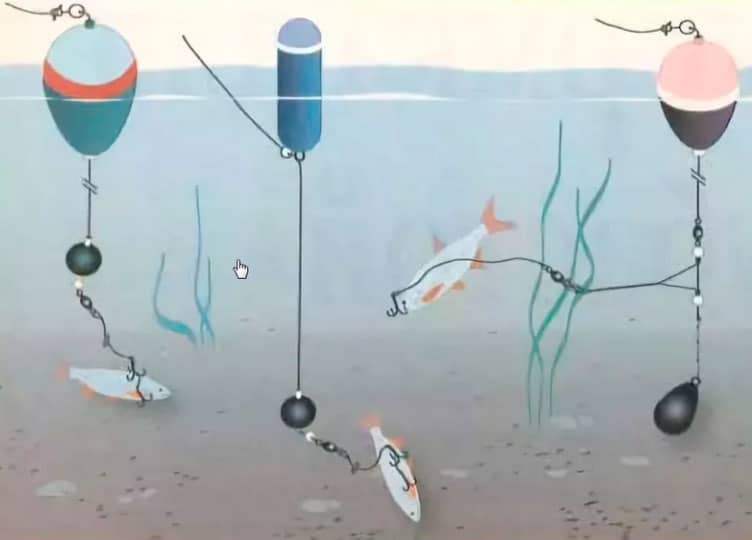 Fishing for pike with live bait on float tackle in autumn [/ caption] To catch such a serious predator you need a long match or telescopic rod. For casting over longer distances, you can install a spinning reel. The
Fishing for pike with live bait on float tackle in autumn [/ caption] To catch such a serious predator you need a long match or telescopic rod. For casting over longer distances, you can install a spinning reel. The
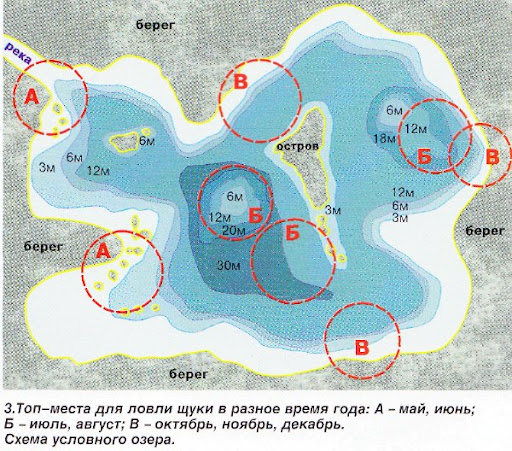
How to assemble a float tackle?
To assemble float gear, first of all, you should focus on the size and nature of the intended prey. If we are talking about catching small inhabitants of the reservoir, represented by roach, crucian carp and rudd, then the tackle should be less overall and thinner so as not to frighten off the fish. If the angler decides to go for larger prey in the form of carp, bream, pike or some other predatory representative of the reservoir, then the rod should be tougher and longer, since fishing will be carried out at a depth.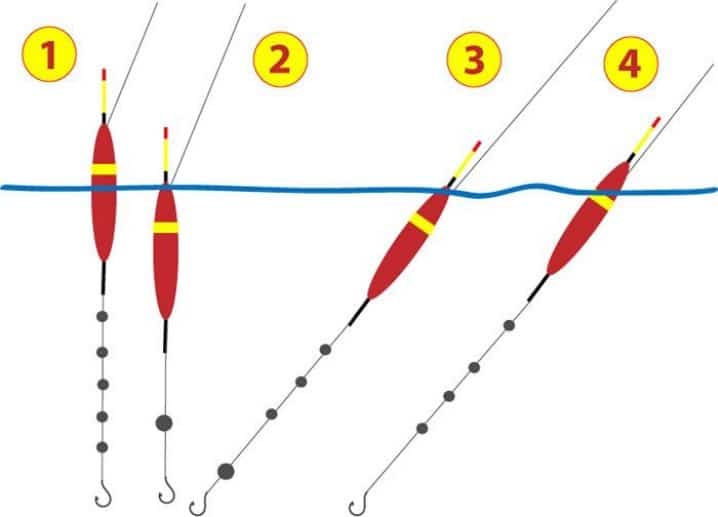 The float tackle in September is suitable for fishing other cautious fish – roach, silver bream and others [/ caption] The ideal rod length is 7-10 meters. And also to fight a large trophy, you need a spinning reel with a strong thread on its spool. The rigs suitable for catching different fish were considered in more detail earlier. But now it is worthwhile to briefly compare the tackle for fishing on the river with the current and for fishing in stagnant water.
The float tackle in September is suitable for fishing other cautious fish – roach, silver bream and others [/ caption] The ideal rod length is 7-10 meters. And also to fight a large trophy, you need a spinning reel with a strong thread on its spool. The rigs suitable for catching different fish were considered in more detail earlier. But now it is worthwhile to briefly compare the tackle for fishing on the river with the current and for fishing in stagnant water.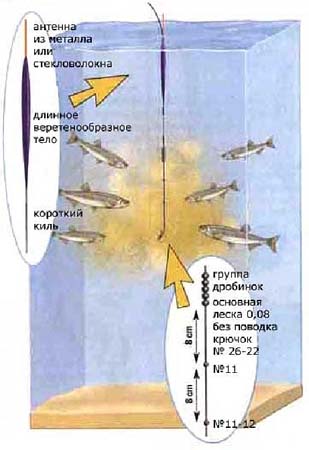
For fishing on the currentyou need to have a fairly heavily loaded tackle so that the behavior of the bait and its location in the water cannot be greatly influenced by water currents. For this, it is recommended to equip the fishing rod with a heavy float, a sinker, and also to use a braid in order to reduce the windage as much as possible, which affects the behavior of the lure in the water.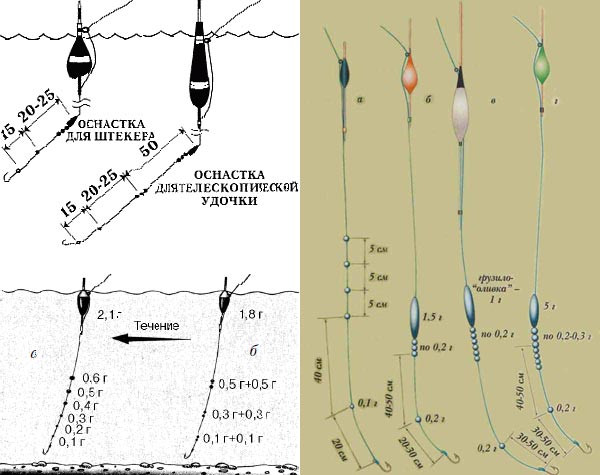
For fishing in stagnant water, you can use less bulky equipment. There is no current here, so there is no need to load the tackle especially. On the contrary, a smaller rig will not scare the fish. To do this, you need to use fluorocarbon line, which is barely visible in the water, and you need to choose small floats and hooks.
Different types of float fishing in autumn
First of all, it should be noted that fishing with a float can be carried out in more than one way. Each of them has its own pros and cons and is aimed at catching specific types of fish. Let’s consider in more detail the main methods of fishing during this period.
Drop wiring
This method is widely used by both amateurs of fishing for white fish species and amateurs of catching a predator with live bait. The essence of the method is to place the load that delivers the bait to the bottom, just below the float. It must be raised further from the hook by 0.5-1 meters. This is done so that the bait falls more slowly and thereby attracts fish, as well as so that the water currents can periodically play with it if fishing is carried out on bodies of water with the current. This method is also popular among fishermen who catch live bait. They raise the lead higher so that it does not weigh on the live bait, giving it freedom to play and less tiring it.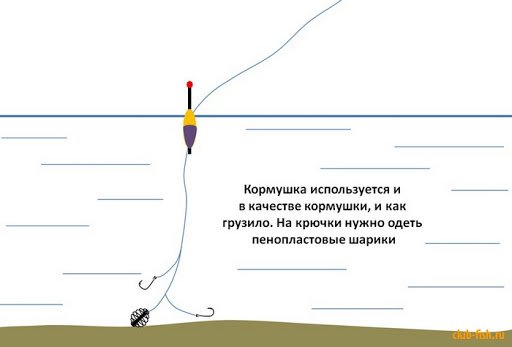
or on rivers with small flow [/ caption]
Tool drawing
This is another interesting float fishing method. It is used both when catching white fish and when catching a predator. To do this, it is necessary to make something like a ”
Moscow rig “. To do this, immediately after attaching and fixing the float, attach a sinker on a leash with a length of 50 cm just below. After that, you need to attach another leash a little higher, but already with a hook and bait. Thus, when dragging the bait along the bottom, the sinker will raise a small layer of turbidity, and the leash located above will follow it, attracting fish.
Snap anchoring
This is the simplest and most popular type of float fishing. This is a classic float fishing in which the bait remains stationary after being thrown into the pond. This is called her anchoring. To do this, it is necessary to make a classic rigging of the float in the form of a float, sinkers corresponding to it in weight, and a hook. Further, the depth of fishing is adjusted and the bait is located near the bottom space in a state of expectation of a bite and without manipulation by the fisherman. Only external factors in the form of the flow or behavior of the fish can affect it.
Difficulties of fishing on a float in the fall and their solution
The biggest challenge when fishing in the fall is the choice of location. In each case, everything is individual and everything is determined based on the factors affecting the upcoming fishing. But with all this, it is worth noting that the most catchy are the areas of the reservoir located next to mud, thickets of cattail or reeds and other aquatic vegetation, and not exceeding a depth of 2.5 meters. Here, many species of fish feel safe and have a good food base, and therefore it is worth paying special attention to this particular place. Sometimes anglers have difficulty choosing live bait. It is necessary for the bait to keep the game for a long time and be active. That is why it is worth trying crucian carp in the form of live bait. It is quite strong and even after the correct fitting it is able to continue active play more than once.It is also the subject of the pike’s habitual diet, making it doubly attractive as bait for this predator. Fishing in the fall in rainy fishing – we solve problems empirically: https://youtu.be/Ss3yp4cBD8s Very often anglers have difficulties when choosing lures. When fishing in the autumn, namely in the second half of autumn, it is worth completely abandoning the usual plant bait. It is necessary to focus on the protein food of animal origin, which fish chooses in order to prepare for the cold as soon as possible.namely, in the second half of autumn, it is worth completely abandoning the usual plant bait. It is necessary to focus on the protein food of animal origin, which fish chooses in order to prepare for the cold as soon as possible.namely, in the second half of autumn, it is worth completely abandoning the habitual plant bait. It is necessary to focus on the protein food of animal origin, which fish chooses in order to prepare for the cold as soon as possible.
